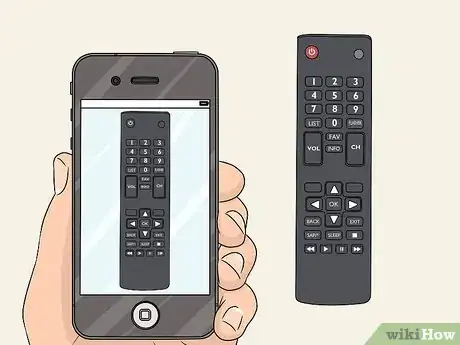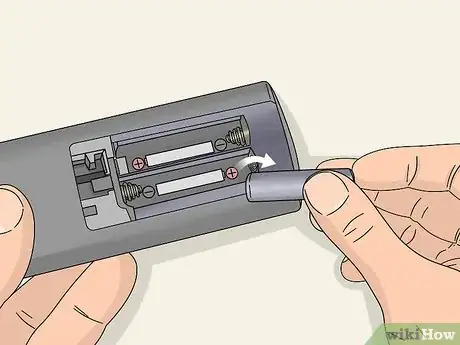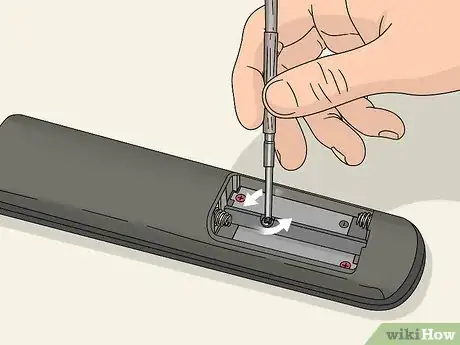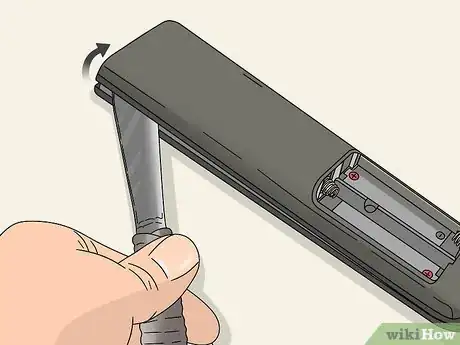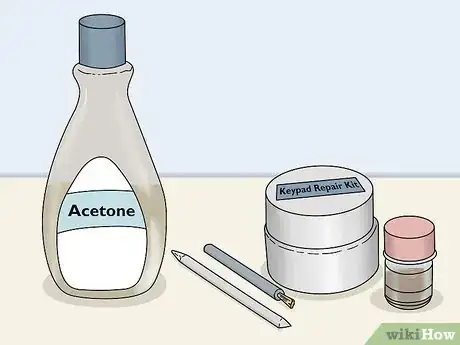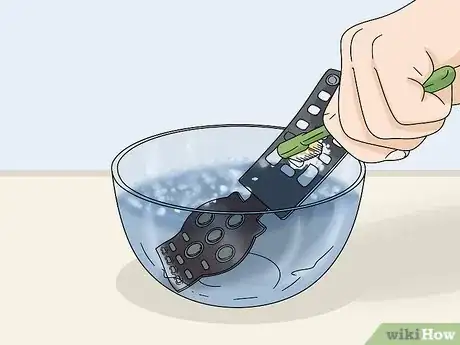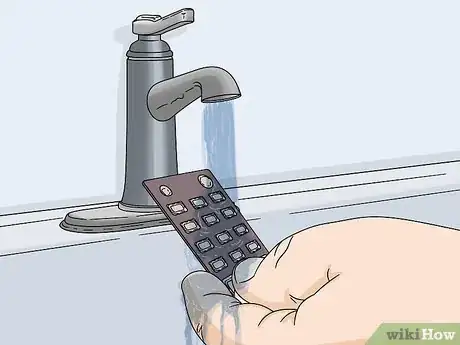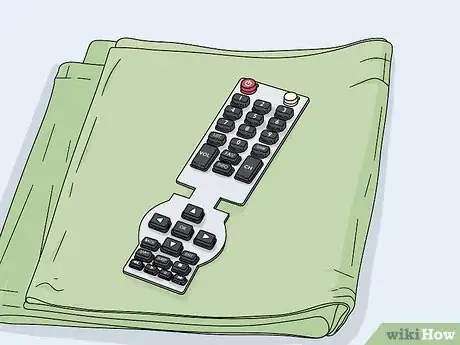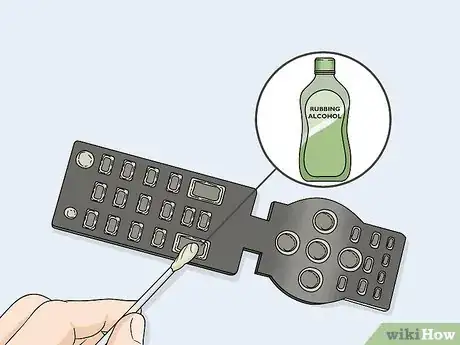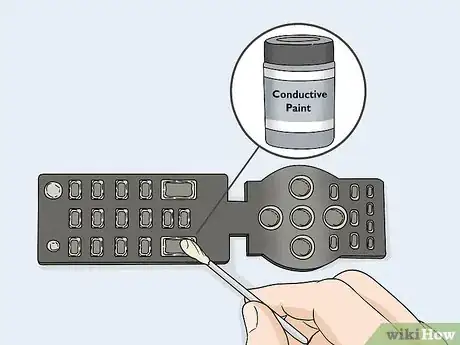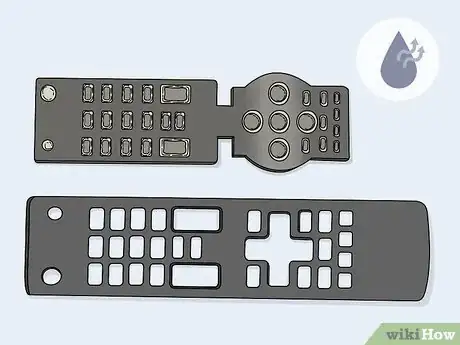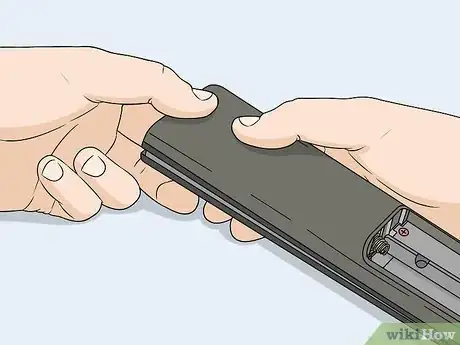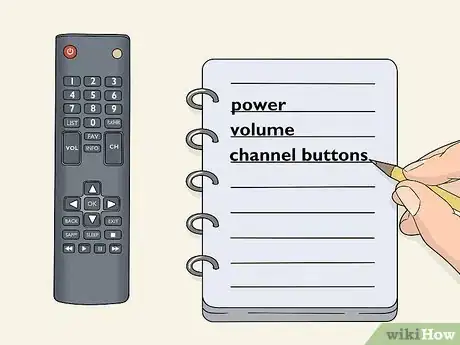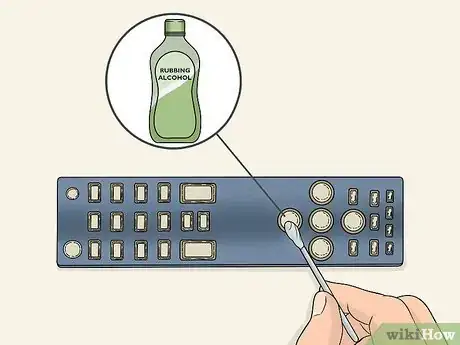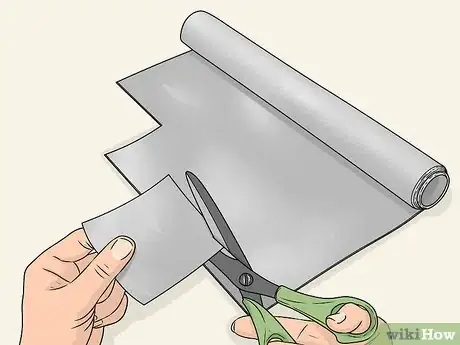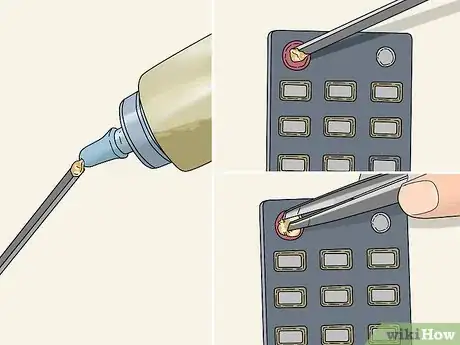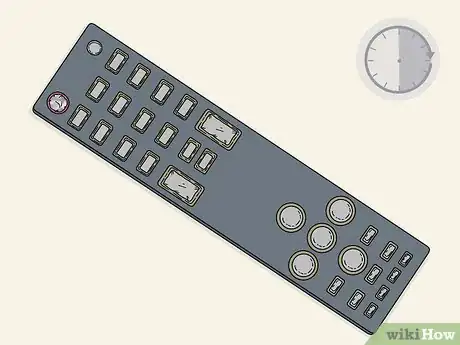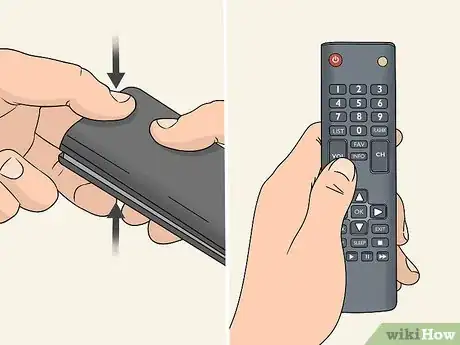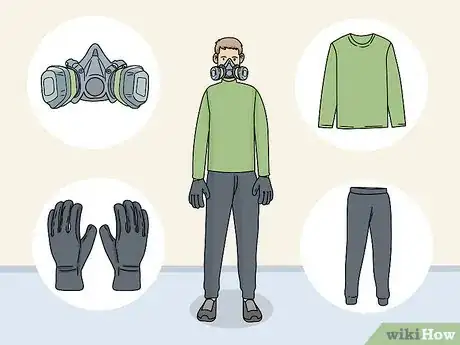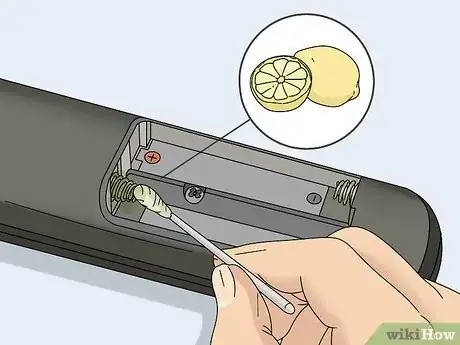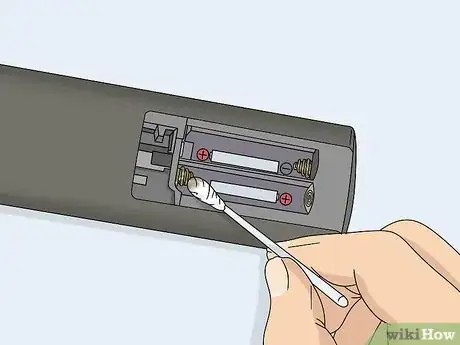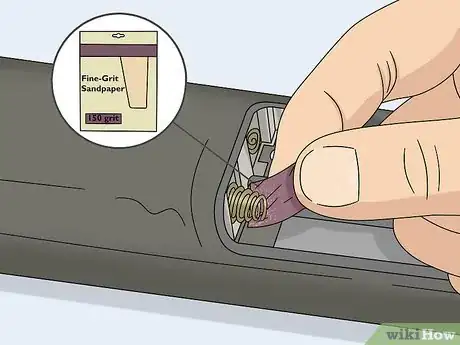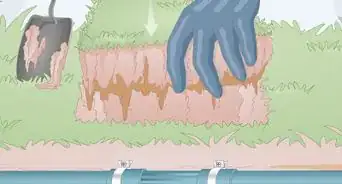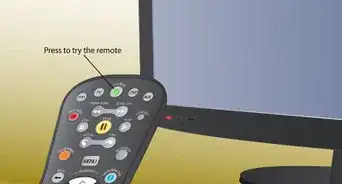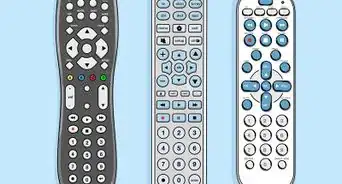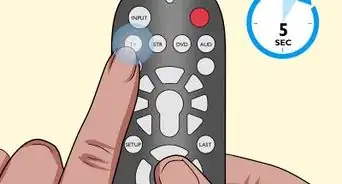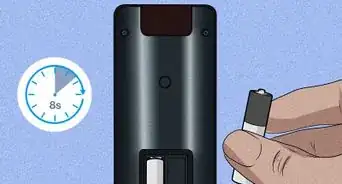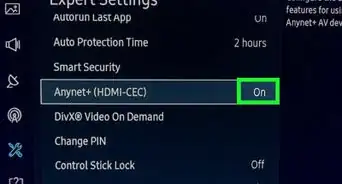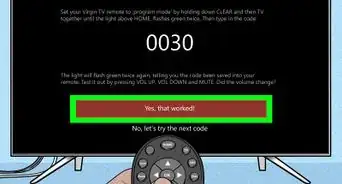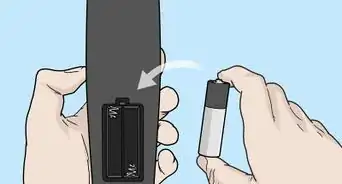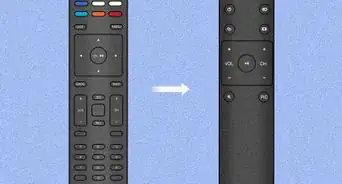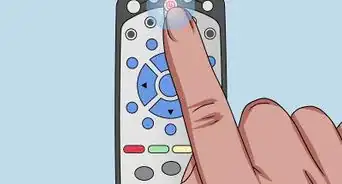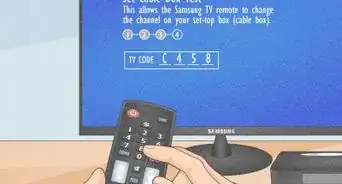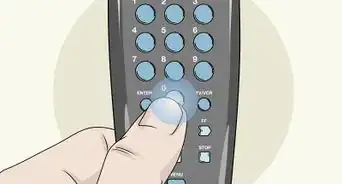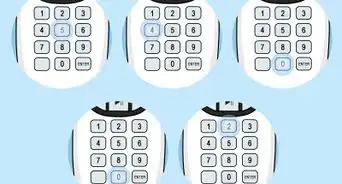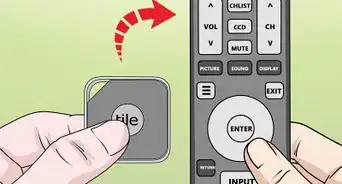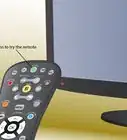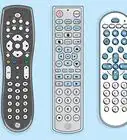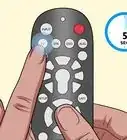This article was co-authored by wikiHow staff writer, Darlene Antonelli, MA. Darlene Antonelli is a Technology Writer and Editor for wikiHow. Darlene has experience teaching college courses, writing technology-related articles, and working hands-on in the technology field. She earned an MA in Writing from Rowan University in 2012 and wrote her thesis on online communities and the personalities curated in such communities.
There are 13 references cited in this article, which can be found at the bottom of the page.
This article has been viewed 665,827 times.
Learn more...
No matter how good your remote is, it will get dirty and wear out from frequent use. Even if some of the keys have stopped working or have to be pushed really hard, they can be fixed even if new batteries don't help. This wikiHow article teaches you how to repair a remote so you can make an old remote last for years.
Things You Should Know
- Get a keypad repair kit or use things from around your house, like an old toothbrush, so you can fully clean and repair the inside of your remote.
- Use conductive paint from the repair kit or aluminum foil to reinforce your remote's contacts.
- Make sure you give your remote lots of time to dry before attempting to use it again because a wet remote increases the chance of you getting shocked!
Steps
Opening the Remote Control
-
1Snap a picture of the button configuration before opening the remote. It’s best to do this before opening the remote since some of the buttons may come flying out when you open it. Use your phone or draw a diagram if you don’t have a user manual with one in it. Also, note and document the position of any screws on the remote.[1]
- The solution used to fix the remote takes some time to dry. Forgetting the button positioning is very easy when you’re forced to wait before putting it back together. Fortunately, you will have a handy picture to make it easier!
- Putting back the screws can also be confusing, so make sure you have pictures of all of them and know where they belong.
-
2Take the batteries out of the remote control. Undo the cover on the back of your controller to pull out the batteries. Removing the batteries will deactivate the controller. It’s always a good idea to deactivate the controller this way before applying any sort of fluid to the electrical components inside of it.[2]
- Depending on the remote, you may need to remove the batteries to open the casing anyway.
Advertisement -
3Find and remove any screws keeping the remote together. All remotes are different, so taking them apart isn’t always a straightforward process. Most of them have a couple of screws in the back. Use a mini Phillips screwdriver to turn the screws counterclockwise until you’re able to remove them. If you don’t see any screws on the back, check the battery compartment and also look underneath any stickers or sliding covers.[3]
- Some remotes may not have any visible screws. These types of removes usually just need to be pried open with a dull blade.
- Be cautious when removing the screws. If the screwdriver slips, it could scratch up your remote.
-
4Open the remote with a butter knife or another dull tool. Look for a crack running along the side or edge of the remote. Most remotes consist of 2 plastic halves. By separating the halves, you can access the internal electronics. Wedge the dull tool into the crack, pry up the cover, and use your hands to pop it off.[4]
- Handle the remote carefully to avoid scratching it. Never attempt to open it with anything sharp.
Using a Keypad Repair Kit
-
1Purchase a keypad repair kit that can be used to fix the remote. A keypad repair kit comes with several brushes and a bottle of conductive paint. Plan on getting one that includes a cleaning fluid as well, such as rubbing alcohol or acetone, so you have everything you need for the repair. Getting a repair kit is well worth the price, especially if you’re trying to fix an expensive remote or one that is no longer manufactured. A typical repair kit costs between $20 and $30, although you may find smaller kits for less.
- Repair kits are available online and at some electronics stores.
- If you don't want to spend your money on a repair kit, you can see what you have at home that also works and then buy the conductive paint separately.
- These repair kits work for other devices, including garage door openers, calculators, and even keyboards.
-
2Wash the rubber buttons with soap and water. Remotes either have individual buttons or a sheet of plastic with all the buttons attached. Remove the individual buttons or the entire sheet and take it to your sink. Fill a bowl with warm water, then mix in at least 1 US tbsp (15 mL) of a liquid dish detergent. Soak the buttons and scrub them clean with a soft brush.[5]
- Use one of the brushes in your kit or get an old toothbrush. Rub away any noticeable debris, but spend extra time scrubbing any buttons that stick when you press them.
-
3Rinse the buttons and plastic case off under running water. Get some warm water running in your sink. Move all of the buttons there. The parts of the plastic case, as long as they don’t contain any electronic components, are also safe to wash this way. Make sure you get all of the soap and remaining debris before allowing the components to dry.[6]
- Test the buttons. If they stick or feel sticky, then spend more time scrubbing them. Look closely for any debris that could cause them to stop functioning.
-
4Set the buttons in a spot with good air circulation to dry. Spread out a towel on your countertop, for instance, and put the buttons and case parts there. Keep them in a relatively secure place out of direct sunlight. Decrease the drying time by keeping them out in the open.[7]
- Make sure the remote control components are out of the way so they don’t end up getting knocked over and lost.
- The parts have to be completely dry before going back into the remote or else the moisture could damage the circuitry.
-
5Wipe the circuit board with rubbing alcohol. The best solution to use on the electrical components is rubbing alcohol since it dries quickly (the higher the percentage, the better, so 70% is the lowest you want to get; 91% is ideal). Dip a cotton ball in rubbing alcohol to dampen it, then wipe away any debris you see inside the remote. Make sure the cotton ball isn’t dripping, or else you could apply more liquid than you intend.[8]
- The electrical parts are delicate, so apply rubbing alcohol sparingly by using something soft, such as a cotton ball.
-
6Apply conductive paint to the keypad contacts. The contacts are underneath each button and rest against the remote’s circuit board. Most kits include a small paper match or brush you can use to spread the paint. Dip the match in the paint, then apply a thin coat of it to the bottom of each contact. Make sure the rubber contacts are all well-coated.[9]
- Check the repair kit instructions before opening the included jar of paint. You may need to prepare or mix it in a certain way in order to use it.
-
7Let the remote dry for up to 72 hours. The conductive paint dries in about 24 hours, but it doesn’t completely cure until 72 hours have passed. To ensure the repair is successful, wait the full 72 hours if you are able to spare the time. In the meantime, keep the keypad on the towel you set out when letting it dry earlier.[10]
- Leave the keypad with the contacts face up so the paint doesn’t rub off on the towel.
-
8Put the remote back together and test it. After having to wait for 3 days, you may have forgotten how all the pieces fit together. It’s not a problem, since you took a picture of the remote earlier. Refer to the picture while putting all sliding bars, loose buttons, screws, and other components back where they belong. Replace the batteries when you’re done.[11]
- If the remote still doesn’t work, it may be time to invest in a replacement. Take the old remote to a facility that recycles electronics.
Repairing Buttons with Aluminum Foil
-
1Make a note of the buttons that do not function. The buttons you most commonly used are likely to wear out first. This includes the power, volume, and channel buttons. Determine where these buttons are located before and after you open the remote. Write down the locations so you know which ones to fix.
- Test all of the buttons before opening the remote. That way, you can repair them all at once instead of having to open the remote multiple times.
-
2Clean the rubber contacts with rubbing alcohol if they are dirty. Check all the buttons, but pay extra attention to the ones that aren’t functioning correctly. When they are new, they have a shiny coating of conductive paint on them. This paint wears off over time and may also collect dust or other debris. Dampen a cotton swab in a little bit of rubbing alcohol, then wipe away the debris.[12]
- If your remote needs a deeper cleaning, take out the removable components and wash them with soap and water. Scrub the electronic components with rubbing alcohol.
-
3Cut pieces of aluminum foil to fit over the contacts. The exact size of the foil isn’t too important, but try to cut it so it’s similar to the pads. If you have a hole punch, use it to create perfect circles that match the contacts. Otherwise, use a sharp pair of scissors. You can cut the foil into small squares that are about the same size as the contacts.[13]
- If the foil is too big, it may get in the way of the other contacts or fail to fit inside the remote. You really can’t make the foil too small, however.
-
4Glue the foil to the non-functioning contacts. Try using a contact adhesive, which is a very strong type of rubber cement. You may also have success with super glue or craft glue. Instead of squeezing the glue directly onto the contacts, dip the tip of something small, like a matchstick, into it. Use it to spread a thin but consistent layer of glue across each contact.[14]
- While you can squeeze the glue onto the contacts, you will usually end up using too much of it. It can lead to a mess that is difficult to clean up.
- If you’re having a hard time placing the foil on the contacts, use tweezers or another tool. Positioning the small squares by hand can be difficult.
-
5Wait at least 30 minutes for the glue to dry. Check the manufacturer’s instructions for an exact recommendation. Contact adhesive and other glues you may use tend to dry relatively quickly. However, you may wish to leave the remote alone for longer to ensure the glue fully cures. Some super glues can take as long as 24 hours to cure.
- Set the remote parts out on a towel with the contacts up in the air. This will help the glue dry and also prevent the foil from coming off the contacts.
-
6Reassemble the remote and test it. Put the keypad back inside the casing. Refer to a picture or diagram of your remote to position any loose parts correctly. Make sure the keypad contacts rest against the circuit board as well. When you’re done, put the batteries back in to use the remote.[15]
- If the buttons still aren’t working, you may need to replace the remote.
Cleaning Battery Terminals
-
1Put on gloves and other safety equipment. Battery acid is very harsh, so don’t let any get on your skin. Consider wearing long pants and a long-sleeved shirt as well. A safety mask, such as a dust mask, respirator mask, or even a face mask, is a must.[16]
- To make cleanup easier, take some time to prepare your work surface. Spread newspaper out under the remote to catch any corrosion.
- Work in an area with good ventilation. Turn on ventilation fans or open nearby doors and windows.
-
2Spread vinegar or lemon juice on any noticeable acid. Pull the batteries out of the remote and set them aside. If the batteries have begun leaking, you will see white flakes like rust inside the remote. Squeeze a drop of the liquid onto the corroded spots to neutralize them. You can use a cotton swab to help spread the liquid around.[17]
- If you don’t see any signs of corrosion, you don’t have to worry about neutralizing anything and can focus on cleaning the electrical contacts inside the battery chamber.
- You can mix in a little baking soda to clear stubborn spots of corrosion.
-
3Scrub away the corrosion using a cotton swab. An old toothbrush can also be helpful for removing any corrosion. Wipe corrosion off the batteries first, then work on the battery chamber in the remote. When you’re done, check it over for anything you missed. Sometimes the corrosion is very small and can be easy to overlook.[18]
- Wipe the corrosion off onto a newspaper or sweep it into a garbage bag. Be careful to avoid spreading it throughout your home.
- If you need to, use a toothpick or pencil eraser to reach anything you can’t remove with a cotton swab or toothbrush.
-
4Clear the electrical contacts with 150-grit sandpaper. If the contacts inside of the remote’s battery chamber look dirty, clean them. Try scrubbing them with a piece of 150-grit sandpaper. Wear off the corrosion, taking care not to rub the spots that appear clean. Throw away the sandpaper when you’re done.[19]
- Use a metal file to clean areas that are tough to reach. Another good tool to have around is a wire brush, which can also be used in place of sandpaper.
- When you’re done, install new batteries and test the remote. Corroded terminals can’t properly receive power from batteries, so cleaning them can make the remote work again. If it still doesn’t work, you may need to buy a new one.
Our Most Loved Articles & Quizzes
Community Q&A
-
QuestionWhat kind of adhesive is an impact adhesive?
 Community AnswerI think they meant "contact adhesive". Also, apply the foil pieces to the contact points on back of the rubber (silicone) buttons (usually flat black dots), NOT on the circuit board as was illustrated. Doing as is illustrated will definitely ruin the remote.
Community AnswerI think they meant "contact adhesive". Also, apply the foil pieces to the contact points on back of the rubber (silicone) buttons (usually flat black dots), NOT on the circuit board as was illustrated. Doing as is illustrated will definitely ruin the remote. -
QuestionHow do I change the batteries in my DirecTV remote control?
 Community AnswerThere should be a panel on the back of the remote that opens. You can then remove the old batteries and replace them.
Community AnswerThere should be a panel on the back of the remote that opens. You can then remove the old batteries and replace them. -
QuestionWhat do I do if the volume controls on my remote aren't working?
 Community AnswerStart by changing the batteries in your remote. If that doesn't solve the problem, there may be damaged to the volume keys or circuitry, so I would recommend purchasing a new remote.
Community AnswerStart by changing the batteries in your remote. If that doesn't solve the problem, there may be damaged to the volume keys or circuitry, so I would recommend purchasing a new remote.
Warnings
- Battery acid is very toxic, so wear safety protection when dealing with corrosion. Keep in mind that your area may have special disposal rules for corroded batteries, so be sure to check local regulations.⧼thumbs_response⧽
Things You'll Need
Opening the Remote Control
- Camera or owner’s manual
- Mini Phillips screwdriver
- Butter knife
Using a Keypad Repair Kit
- Bucket
- Liquid dish soap
- Water
- Towel
- Cotton balls or swabs
- Rubbing alcohol
- Conductive paint
Repairing Buttons with Aluminum Foil
- Scissors or hole punch
- Aluminum foil
- Cotton swab
- Rubbing alcohol
- Contact adhesive
Cleaning Battery Terminals
- Newspaper
- Rubber gloves
- Dust mask
- Lemon juice or vinegar
- Cotton swab
- 150-grit sandpaper, metal file, or wire brush
- Trash bags
References
- ↑ https://www.familyhandyman.com/electrical/how-to-repair-the-tv-remote/
- ↑ https://fixitclub.com/parts-components-repairs/remote-control-repair/
- ↑ https://fixitclub.com/parts-components-repairs/remote-control-repair/
- ↑ https://www.familyhandyman.com/electrical/how-to-repair-the-tv-remote/
- ↑ https://www.youtube.com/watch?v=gVr8eLW0-_o&feature=youtu.be&t=131
- ↑ https://www.youtube.com/watch?v=yWpMcXWlhBE&feature=youtu.be&t=264
- ↑ https://www.familyhandyman.com/electrical/how-to-repair-the-tv-remote/
- ↑ https://www.youtube.com/watch?v=I1UgnM6uqmE&feature=youtu.be&t=52
- ↑ https://www.youtube.com/watch?v=gVr8eLW0-_o&feature=youtu.be&t=162
- ↑ https://www.familyhandyman.com/electrical/how-to-repair-the-tv-remote/
- ↑ https://fixitclub.com/parts-components-repairs/remote-control-repair/
- ↑ https://www.youtube.com/watch?v=e31imYkNHLI&feature=youtu.be&t=108
- ↑ https://www.youtube.com/watch?v=e31imYkNHLI&feature=youtu.be&t=235
- ↑ https://www.youtube.com/watch?v=oQueHTND49A&feature=youtu.be&t=141
- ↑ https://www.youtube.com/watch?v=e31imYkNHLI&feature=youtu.be&t=616
- ↑ https://www.bobvila.com/articles/how-to-clean-battery-corrosion/
- ↑ https://www.youtube.com/watch?v=aWoBSthN3FM&feature=youtu.be&t=189
- ↑ https://www.youtube.com/watch?v=sDd4VkUm85Y&feature=youtu.be&t=102
- ↑ https://www.bobvila.com/articles/how-to-clean-battery-corrosion/
